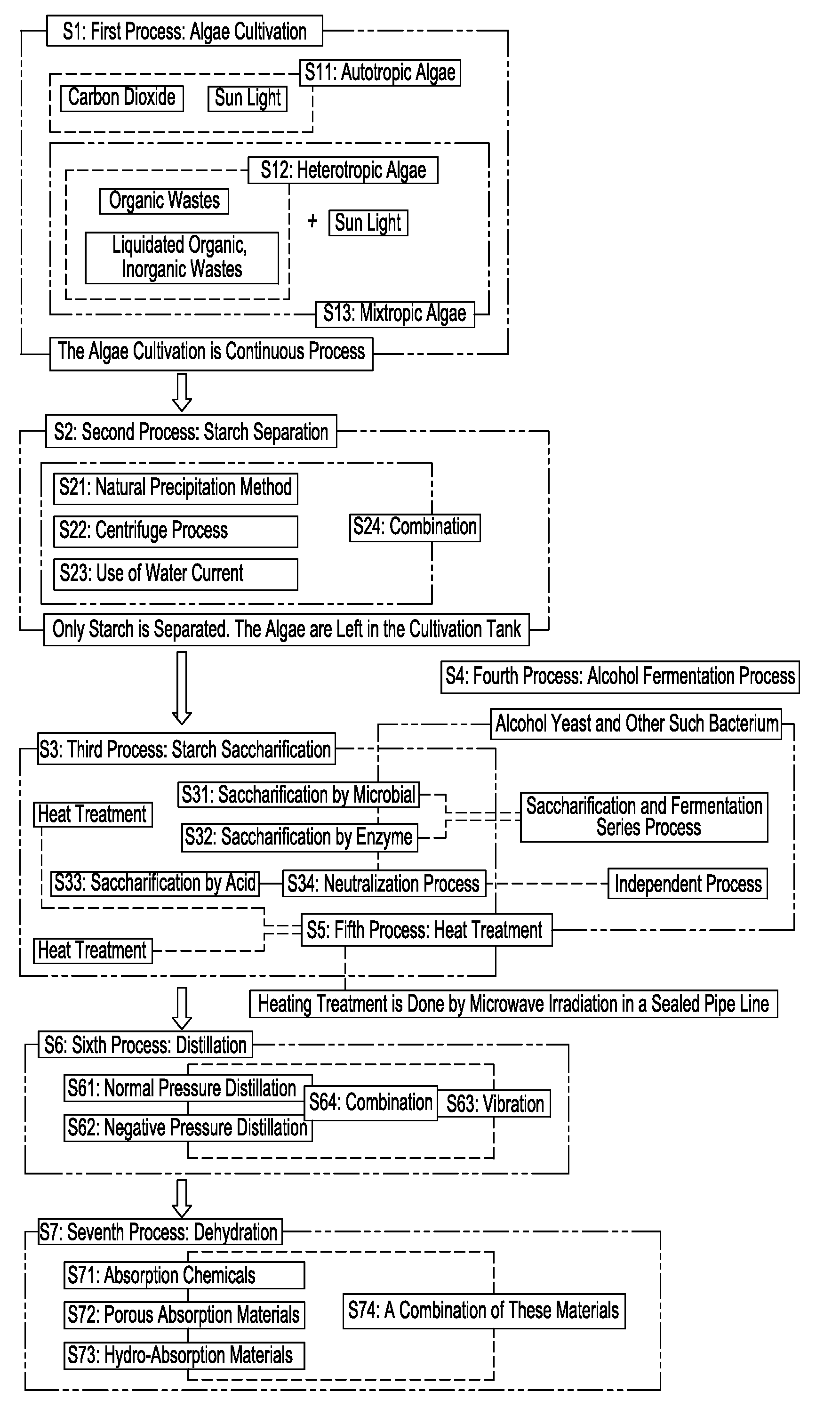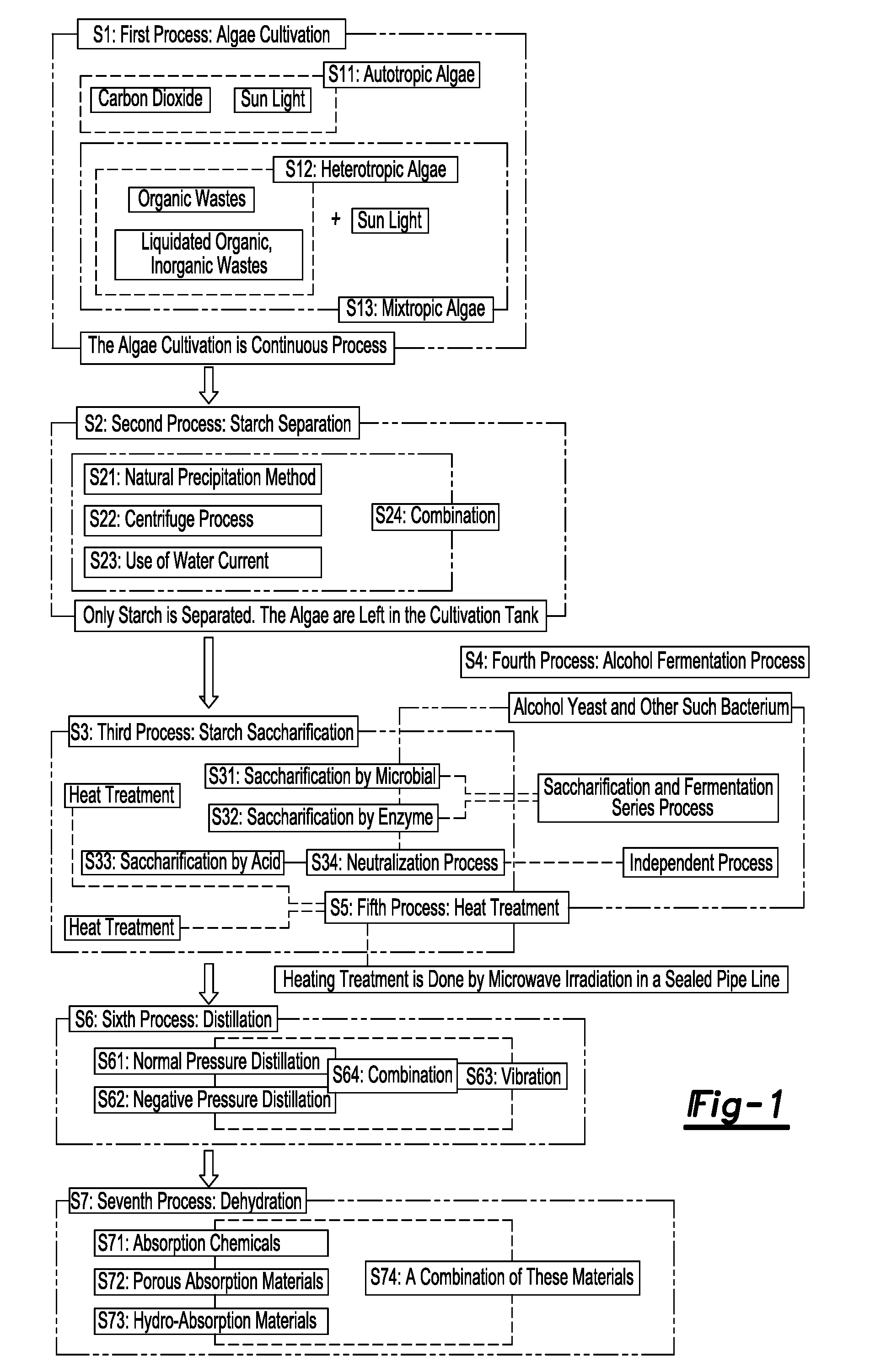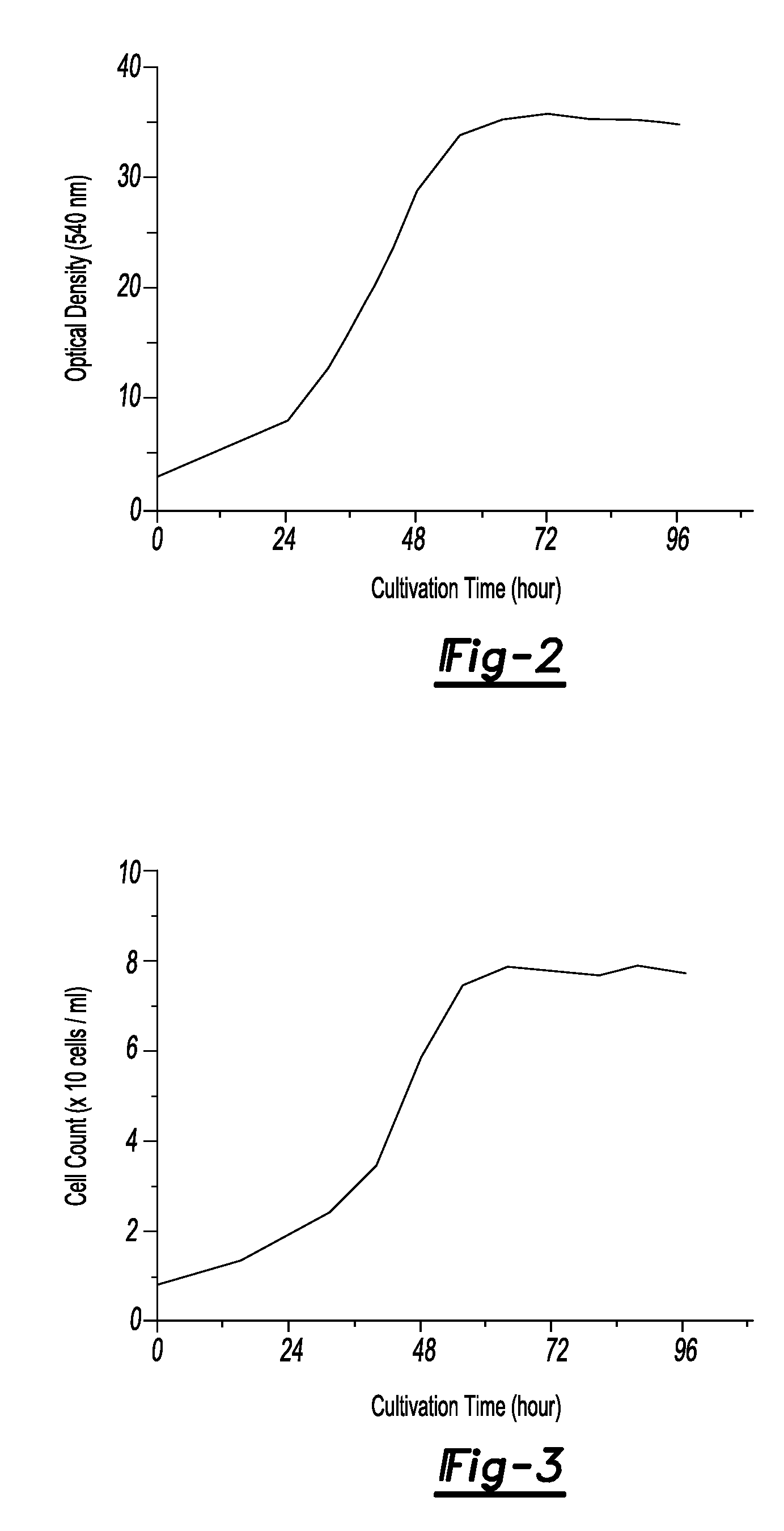Method of producing bio-ethanol
a technology of bio-ethanol and green algae, which is applied in the field of improving the method of producing ethanol from unicellular green algae, can solve the problems of not being used as widely in the field of unicellular algae research fields, and it is likely to become difficult to obtain ethanol from agricultural products such as agricultural products
- Summary
- Abstract
- Description
- Claims
- Application Information
AI Technical Summary
Benefits of technology
Problems solved by technology
Method used
Image
Examples
example 1
[0040]About 1 liter of a basic cultivation medium is prepared with about 2 g of NaNO3, about 0.2 g of MgSO4.7H2O, about 0.05 g of CaCl2.2H2O, about 0.8 g of K2HPO4 about 0.25 g of KH2PO4, about 0.25 g of FeSO4.7H2O, about 3 mg of H3BO3, about 2 mg of MnCl2.4H2O, about 500 μg of Co(NO3)2.6H2O, about 20 μg of ZnSO4.4H2O, about 8 μg of CuSO4.5H2O, and about 2 μg of Na2MoO4.2H2O dissolved in water. As a preservation medium, 15 g of agar-agar and 15 g of glucose are added to the basic cultivation medium. Heat is then applied to thoroughly dry out the controlled medium and the resulting dry medium is placed on a slant agar-agar preservation plate as a dry-bed medium. An additional cultivation medium for the algae is prepared using 20 g of ammonium acetate, 8 g of sodium acetate, and 7 g of potassium acetate for additional carbon nutrients. This medium is combined with the basic cultivation medium so that heterotrophic cultivation with no light source can commence. The pH of the cultivatio...
example 2
[0044]As in Example 1, supplied air and stirring were stopped at the conclusion of the cultivation increase logarithm of the Chlorella Al-1y in a 200 liter cultivation tank containing 100 liters of the cultivation medium. A separation process of the starch from the algae cell is done by natural decantation for 16 hours. We obtained 97 g of dried starch particles by using a centrifuge and subsequently drying the starch under negative pressure at room temperature while adding acetone. The separated cultivation medium which contains the algae cells becomes 1 / 10 (10 liters) in volume. Another 90 liters of cultivation medium is then added to the separated medium. This process is repeated using the same processes as set forth in [0046]. After every 32 hours of cultivation, we were able to obtain starch according to the following table:
TABLE 1Cultivation AttemptObtained Starch Volume (g)197294388491579683796887
[0045]The table above is representative of the ability to obtain a stable volume...
example 3
[0047]In Example 3, we used actual industrial wastes for cultivation. First, we cultivated a special mutant type of Chlorella vulgaris Al-1y where the mutation was induced by radiant ray irradiation (Gamma ray). The resulting algae can be cultivated faster and produce starch more efficiently and effectively. This strain can be grown under heterotrophic cultivation conditions with organic nutrients or a combined process of autotrophic and heterotrophic conditions with CO2 gas and light irradiation, which we have previously referred to as mixotrophic cultivation.
[0048]For making this mutant algae strain, we take 2 ml of cultivated Chlorella vulgaris Al-1y and put it into a 90 mm diameter Petri dish and irradiate it by 0.4 k Gy of gamma ray irradiation. From this irradiation we achieve the desired mutation. For cultivation of this mutant algae strain, the desired mutant algae are seeded on a flat cultivation plate with an agar-agar medium containing acetic acid as the organic nutrient....
PUM
 Login to View More
Login to View More Abstract
Description
Claims
Application Information
 Login to View More
Login to View More - R&D
- Intellectual Property
- Life Sciences
- Materials
- Tech Scout
- Unparalleled Data Quality
- Higher Quality Content
- 60% Fewer Hallucinations
Browse by: Latest US Patents, China's latest patents, Technical Efficacy Thesaurus, Application Domain, Technology Topic, Popular Technical Reports.
© 2025 PatSnap. All rights reserved.Legal|Privacy policy|Modern Slavery Act Transparency Statement|Sitemap|About US| Contact US: help@patsnap.com



